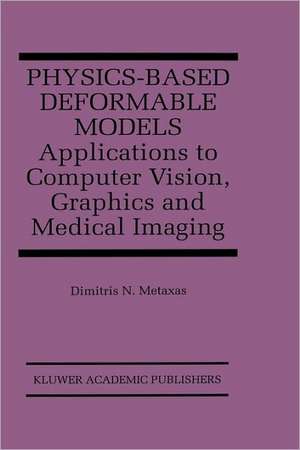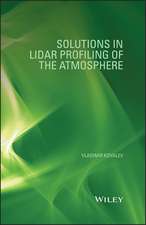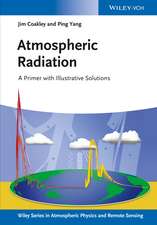Physics-Based Deformable Models: Applications to Computer Vision, Graphics and Medical Imaging: The Springer International Series in Engineering and Computer Science, cartea 389
Autor Dimitris N. Metaxasen Limba Engleză Hardback – 30 noi 1996
Physics-Based Deformable Models is suitable as a secondary text for graduate level courses in Computer Graphics, Computational Physics, Computer Vision, Medical Imaging, and Biomedical Engineering. In addition, this book is appropriate as a reference for researchers and practitioners in the above-mentioned fields.
| Toate formatele și edițiile | Preț | Express |
|---|---|---|
| Paperback (1) | 945.92 lei 6-8 săpt. | |
| Springer Us – 12 oct 2012 | 945.92 lei 6-8 săpt. | |
| Hardback (1) | 952.09 lei 6-8 săpt. | |
| Springer Us – 30 noi 1996 | 952.09 lei 6-8 săpt. |
Din seria The Springer International Series in Engineering and Computer Science
- 24%
 Preț: 1041.98 lei
Preț: 1041.98 lei - 20%
 Preț: 643.50 lei
Preț: 643.50 lei - 18%
 Preț: 1225.62 lei
Preț: 1225.62 lei - 18%
 Preț: 965.02 lei
Preț: 965.02 lei - 20%
 Preț: 646.12 lei
Preț: 646.12 lei - 18%
 Preț: 948.79 lei
Preț: 948.79 lei - 20%
 Preț: 646.62 lei
Preț: 646.62 lei - 15%
 Preț: 637.46 lei
Preț: 637.46 lei - 20%
 Preț: 643.83 lei
Preț: 643.83 lei - 18%
 Preț: 949.23 lei
Preț: 949.23 lei - 20%
 Preț: 644.48 lei
Preț: 644.48 lei - 20%
 Preț: 994.92 lei
Preț: 994.92 lei - 20%
 Preț: 645.97 lei
Preț: 645.97 lei - 18%
 Preț: 946.87 lei
Preț: 946.87 lei - 20%
 Preț: 995.57 lei
Preț: 995.57 lei - 18%
 Preț: 956.99 lei
Preț: 956.99 lei - 20%
 Preț: 644.98 lei
Preț: 644.98 lei - 15%
 Preț: 649.54 lei
Preț: 649.54 lei - 18%
 Preț: 950.21 lei
Preț: 950.21 lei - 18%
 Preț: 1221.38 lei
Preț: 1221.38 lei - 18%
 Preț: 957.62 lei
Preț: 957.62 lei - 15%
 Preț: 643.99 lei
Preț: 643.99 lei - 18%
 Preț: 948.47 lei
Preț: 948.47 lei - 18%
 Preț: 947.35 lei
Preț: 947.35 lei - 20%
 Preț: 1284.65 lei
Preț: 1284.65 lei - 20%
 Preț: 1628.31 lei
Preț: 1628.31 lei - 20%
 Preț: 1285.78 lei
Preț: 1285.78 lei
Preț: 952.09 lei
Preț vechi: 1161.08 lei
-18% Nou
Puncte Express: 1428
Preț estimativ în valută:
182.20€ • 197.85$ • 153.05£
182.20€ • 197.85$ • 153.05£
Carte tipărită la comandă
Livrare economică 22 aprilie-06 mai
Preluare comenzi: 021 569.72.76
Specificații
ISBN-13: 9780792398400
ISBN-10: 0792398408
Pagini: 308
Ilustrații: XV, 308 p.
Dimensiuni: 155 x 235 x 19 mm
Greutate: 0.64 kg
Ediția:1997
Editura: Springer Us
Colecția Springer
Seria The Springer International Series in Engineering and Computer Science
Locul publicării:New York, NY, United States
ISBN-10: 0792398408
Pagini: 308
Ilustrații: XV, 308 p.
Dimensiuni: 155 x 235 x 19 mm
Greutate: 0.64 kg
Ediția:1997
Editura: Springer Us
Colecția Springer
Seria The Springer International Series in Engineering and Computer Science
Locul publicării:New York, NY, United States
Public țintă
ResearchCuprins
1 Introduction.- 1.1 Illustrative Examples of Modeling and Estimation.- 1.2 Chapter Outline.- 2 Geometry of Deformable Models.- 2.1 Related Work.- 2.2 Hybrid Deformable Models.- 3 Kinematics and Dynamics.- 3.1 Kinematics.- 3.2 Dynamics.- 3.3 Choosing the Order of the Motion Equations.- 4 Finite Element Implementation.- 4.1 Choosing the Appropriate Elements.- 4.2 Various Model Tessellations.- 4.3C0Elements.- 4.4C1Triangular Elements.- 4.5 Approximation of the Lagrange Equations.- 5 Applied Forces.- 5.1 Computer Vision and Medical Imaging Applications.- 5.2 Computer Graphics Applications.- 5.3 Force–Based Estimation.- 6 Model Implementation.- 6.1 Integrating the Motion Equations.- 6.2 Model Initialization.- 6.3 Computer Vision Experiments.- 6.4 Computer Graphics Experiments.- 7 Constrained Nonrigid Motion.- 7.1 Holonomic Constraints and Lagrange Multipliers.- 7.2 Stabilized Constraints.- 7.3 Fast Constraint Force Computation for Multibody Objects.- 7.4 Experiments with Constraints.- 8 Shape and Nonrigid Motion Estimation.- 8.1 Recursive Estimation.- 8.2 Kalman Filter Implementation.- 8.3 Recursive Estimation of Shape and Nonrigid Motion.- 9 Multi–Level Shape Representation.- 9.1 Related Work.- 9.2 Deformable Models: Geometry and Dynamics.- 9.3 Locally Adaptive Finite Elements.- 9.4 Summary of Model Fitting to Range Data.- 9.5 Experiments.- 10 Topologically Adaptive Models Based on Blending.- 10.1 Related Work.- 10.2 Blended shapes.- 10.3 Reconstruction and evolution.- 10.4 Experiments.- 11 Integration of Qualitative Segmentation and Pbm Methods.- 11.1 Related Work.- 11.2 Qualitative Model Extraction.- 11.3 Quantitative Shape and Motion Recovery.- 12 Motion–Based Part Segmentation and Tracking.- 12.1 Related Prior Work.- 12.2 Deformable Models: Extensions.- 12.3Inferring structure in 2D.- 12.4 Two–dimensional human body model acquisition.- 12.5 Three–dimensional Human Body model acquisition.- 12.6 Human Body Tracking.- 12.7 Experimental Results.- 13 Volumetric Analysis of the Left Ventricular Wall Motion From Mri–Spamm.- 13.1 Related Work.- 13.2 Data Extraction Techniques for Cardiac Motion Studies.- 13.3 Volumetric Deformable Models with Parameter Functions.- 13.4 Model Force Computation.- 13.5 Model Parameters.- 13.6 Implementation of Model Fitting Procedure.- 13.7 Experimental Results.- 14 Visualizing Respiratory Mechanics Based on Anatomical and Physiological Modeling.- 14.1 Related Work.- 14.2 Basic Anatomy and Physiology.- 14.3 Methods.- 14.4 Results.- 15 Recursive Dynamics and Adaptive Control for Animating Articulated Figures.- 15.1 System Description.- 15.2 Efficient Forward Dynamics.- 15.3 Collision handling.- 15.4 Dynamic Control.- 15.5 Results.- 16 Animating Liquids.- 16.1 Navier–Stokes Equations.- 16.2 Solving the Navier–Stokes equations.- 16.3 Tracking fluid position.- 16.4 Buoyancy.- 16.5 Summary of the Navier–Stokes Algorithm.- 16.6 Control.- 16.7 Examples.- 17 Conclusions.- A.- References.


















